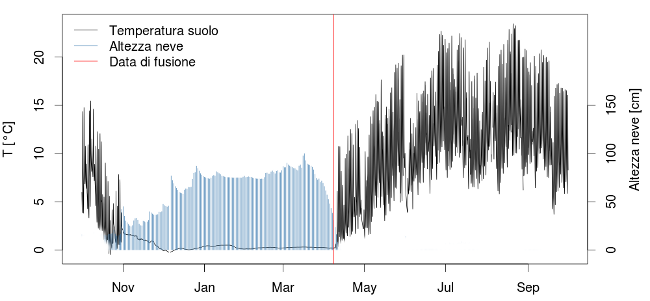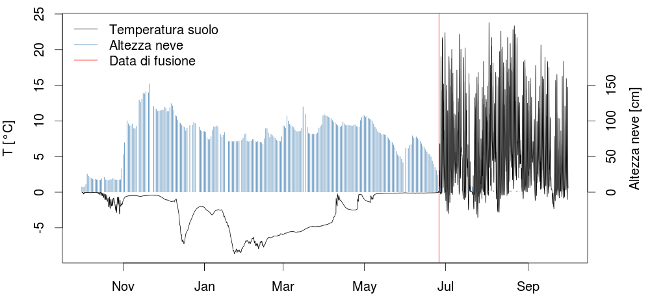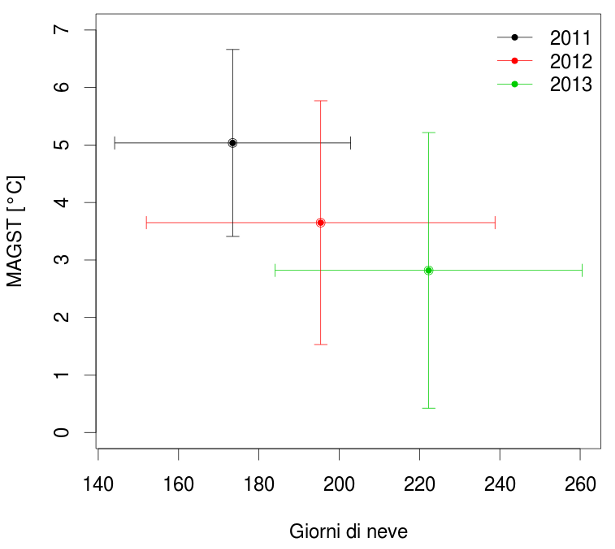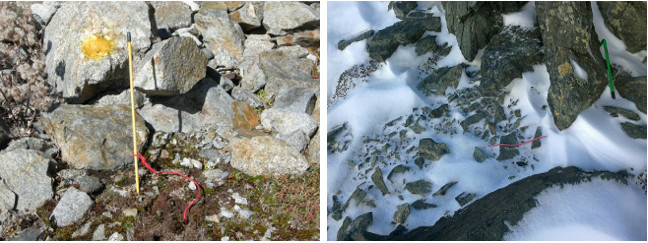Snow acts as a thermal insulator. A snow depth of 15-20 cm is enough to dampen daily soil temperature variation. At snow melt in spring or early summer soil temperature increases driven by solar radiation and air temperature.

Ground temperature in the picture above (black line) indicates quite clearly snow onset and snowmelt (red vertical line) and thus snow cover duration. Ground temperature under the snow can can be an inderect evidence of permafrost presence: values below -2/-3°C (see picture below) can be caused by permfrost presence; warmer values around 0°C (picture above) indicates permafrost absence.

Aiming at monitoring the relation between ground surface temperature and snow cover duration and infering indications of permafrost distribution, we installed a network of 20 ground surface temperature sensors in the area of Cervinia (italian side of the Matterhorn). Sensors have been installed at a depth of 5 cm at different elevations (2100-3100 m asl) and in different soil type.
After 3 measurement years (2011-2013), only sensors at higher elvations (2900-3100 m asl) showed temperature values indicating possible permafrost presence. Considering the effect of snow on ground temperature, a highly variable snow cover duration and thus a significant impact on mean annual ground surface temperature (MAGST) has been detected. In particular we observed that longer snow seasons correspond to lower MAGST values. The figure shows mean (dot) and standard deviation (vertical and horizontal bars) of the MAGST and snow cover duration of the 20 sensors installed and their variation in the 3 years.


